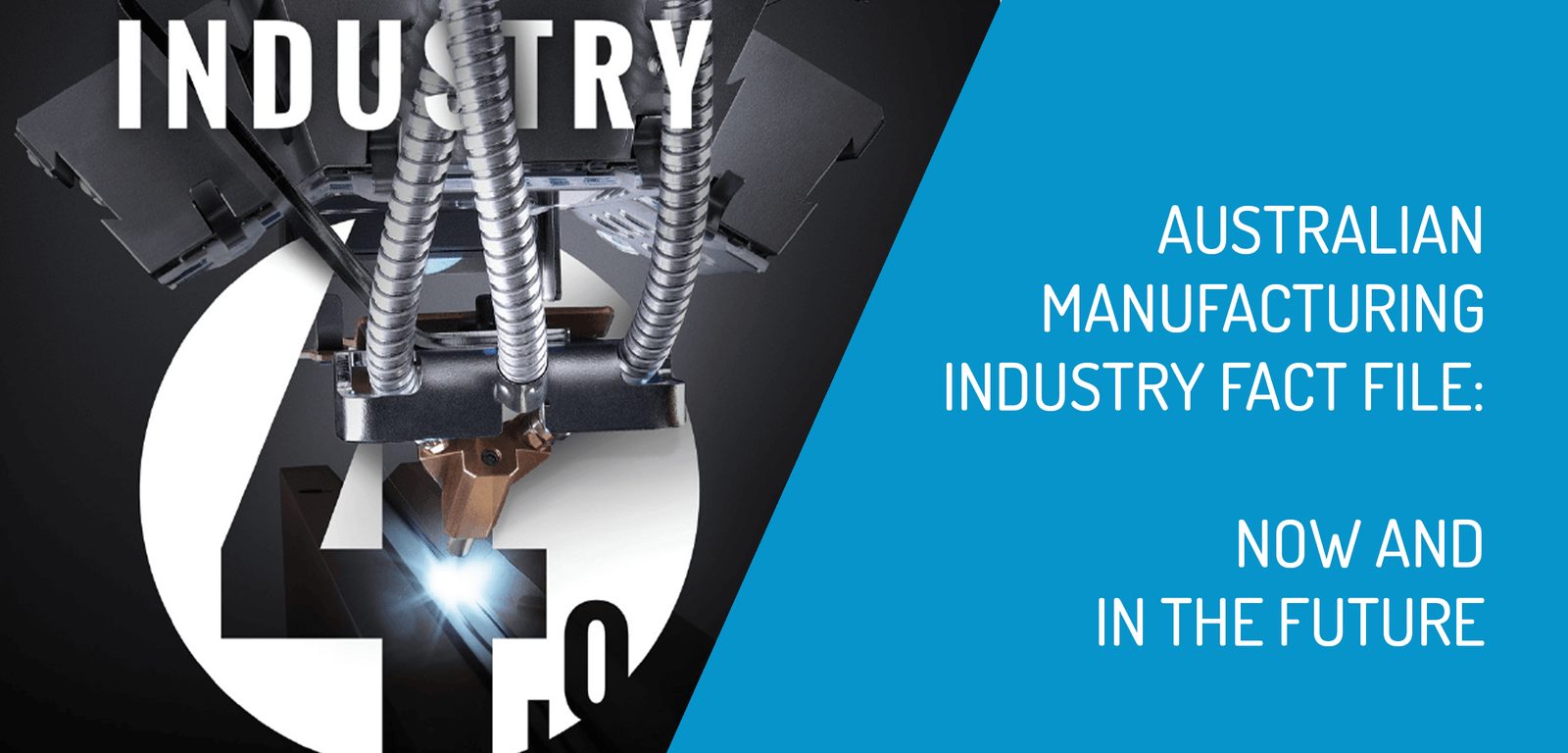The Australian Manufacturing Industry Fact File
Here are some infographics and data about the Australian manufacturing industry now, as well as future trends, challenges, and opportunities.

Future Trends
- “Manufacturing is returning to Australia.”* Wages in China have risen. Demand for high-quality products. Companies setting up closer to the market. IT infrastructure and sophisticated technology demands a highly educated workforce.
- “Manufacturing is estimated to grow 25-35% by 2026″* (according to Advanced Manufacturing Growth Centre AMGC).
- Machinery and equipment manufacturing has grown 10.5% in the last year (Feb 2018-Feb 2019).
- “Industry 4.0 will transform manufacturing and revolutionise production.”

Future Challenges and Opportunities
- “Low government investment in manufacturing R&D.”* US 1.29%. Germany 1.33%. Australia 0.23%.
- “Trade opportunities and markets for Australian manufacturing.”
- “Better educated workers leads to greater cost efficiency.”*
[References: Australian Industry Group report – Australian Manufacturing in 2019, 2017 Magellan Group report – ‘The surprising future of manufacturing’, Advanced Manufacturing Growth Centre AMGC.]
“If we can raise the profile of Australia’s capability but more importantly our competitive edge over imported product, buyers/procurement officers, engineers, developers, and designers will start to spec Australian Made.” – Ty Hermans, Managing Director, Evolve Group
To paraphrase Mark Twain, rumours of the death of manufacturing have been greatly exaggerated. At present, the manufacturing sector in Australia employs 873,000 Australians, and according to the Advanced Manufacturing Growth Centre, the whole manufacturing supply chain supports 1.27 million Australians in work. Manufacturing is the seventh-largest employer sector in Australia and is the fifth largest for economic output.
Nevertheless, despite manufacturing’s strong position, pockets of growth, and enormous potential, there remain significant challenges to the sector. And given the enormity of the sector, the knock-on and multiplier effects can be significant in either direction. And like the purported demise of manufacturing, it’s not the case that industrialised nations have ceased investing in manufacturing. Nations like the US and Germany invest over 6 times the Gross Domestic Spending on manufacturing in R&D that Australia does.
And with the emergence of ‘Industry 4.0’ (the use of cyber-physical systems) manufacturing is only set to become more complex; leading to the trend toward reshoring of manufacturing work back to industrialised nations like Australia. A combination of factors, including rising labour costs in other nations, the increasing sophistication of production techniques (and therefore educational and technology infrastructure requirements), shipping costs, IP risk, quality and re-work, the desire to manufacture closer to market, the benefits of integrating engineering and production, and increasingly, political sentiment, has led to a move back to industrialised nations.
The best way for Australia to avail itself of these opportunities is to build awareness of the value inherent already in the Australian manufacturing sector, and for all levels of government to help it to continue to thrive by investing in it and working with the manufacturing industry to find the best policy settings and to help open up trade opportunities domestically and abroad.




